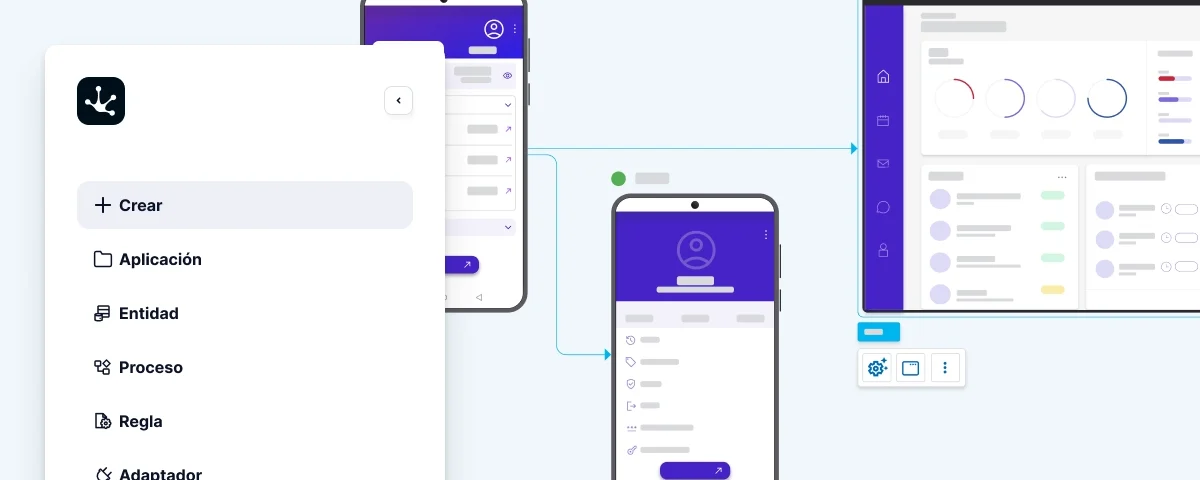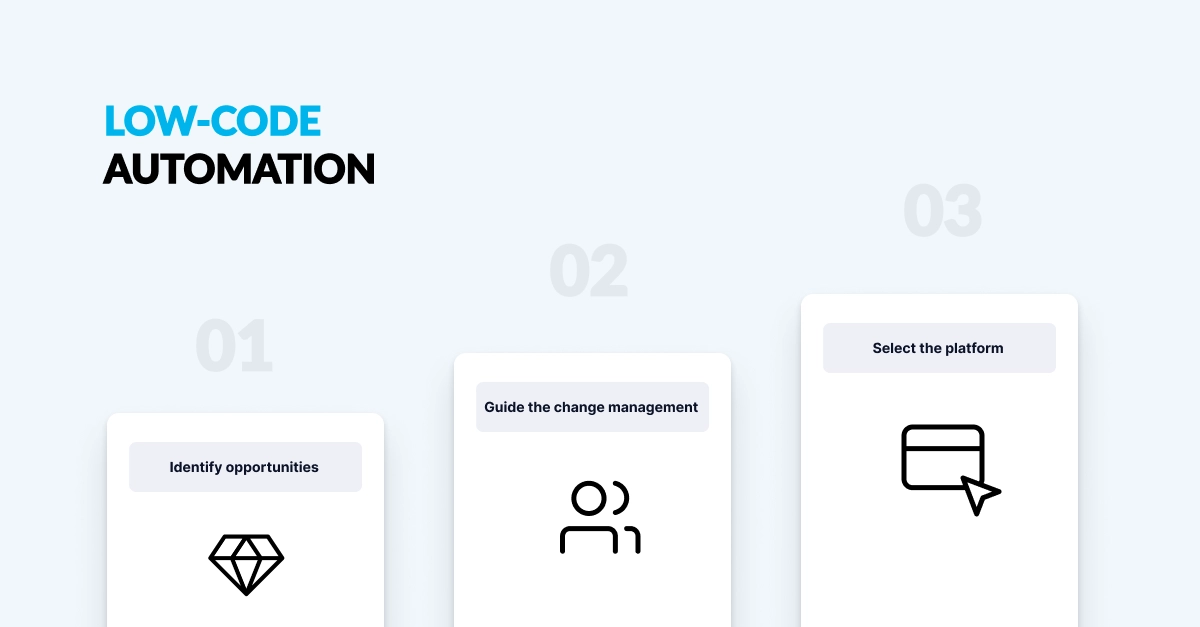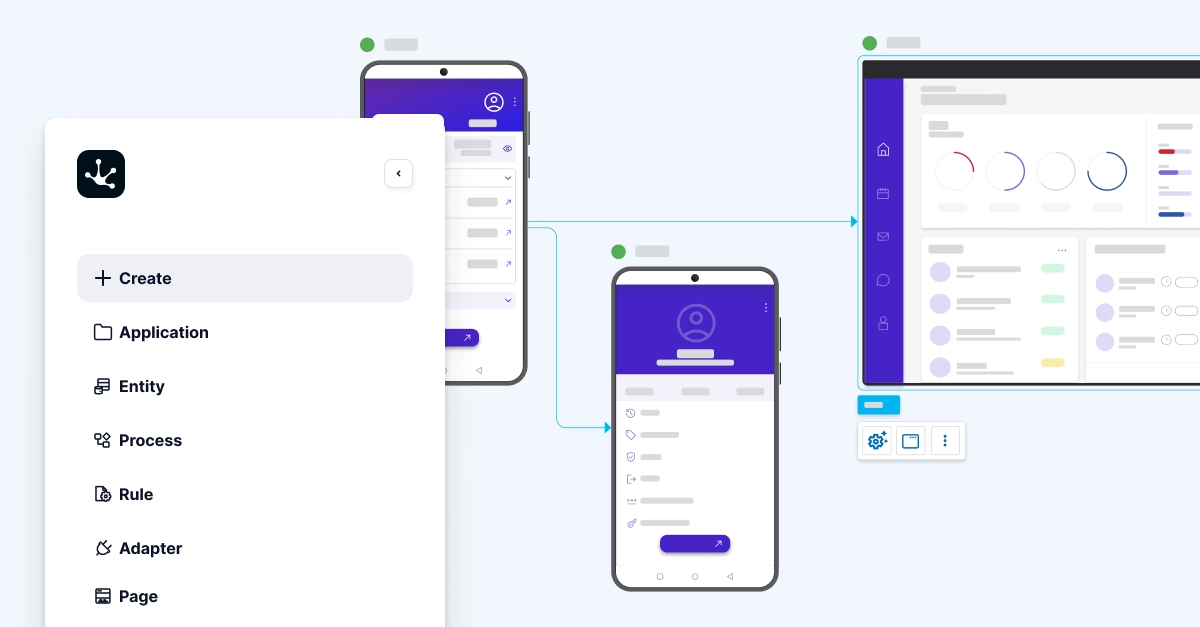
Build vs. Buy: What’s Best for Your Business?
October 2, 2024
Get better forms with Low-Code platforms
October 28, 2024Automate business processes usingLow-Code platforms

Automating processes using low-code platforms means utilizing tools that allow you to design and execute automated workflows without the need for advanced coding. In this blog post, we will discuss the meaning of this approach and the importance of low-code automation.
Let’s start from the beginning:
What is a low-code platform?
A low-code platform is a tool that allows developers to create software applications with minimal manual coding. These platforms offer intuitive visual interfaces, pre-built components, and reusable modules (building blocks that can be used in multiple applications or in different parts of the same application), which facilitate and accelerate the development of both web and mobile applications.Why is it important to automate processes with low-code?
Low-code automation offers transformative potential that reshapes the way companies approach their processes. This approach enhances the productivity of the entire workforce and significantly reduces manual errors.Examples of automation with low-code
- Request management One of the most common applications of low-code is the automation of the approval flow for requests. This can include vacation requests, permits, or resources, where each step of the process, from the creation of the request to its approval or rejection, is recorded and managed without manual intervention. With low-code tools, custom interfaces can be designed that allow employees to submit their requests from any device, while the approvers receive automatic notifications and can make decisions from the same platform. Additionally, these systems can integrate with other human resources systems, keeping everything synchronized in real-time.
- Customer service Another area where low-code shines is in the creation of chatbots to handle common customer inquiries. These bots, which can be implemented quickly without the need for advanced programming skills, allow companies to provide 24/7 assistance. When the chatbot detects that an inquiry is more complex, it automatically escalates the case to a human representative, ensuring that customers always receive the help they need without delays. The implementation of artificial intelligence in these bots also enables them to adapt and learn from interactions, continuously improving their ability to solve problems.
- Financial processes In the financial realm, low-code automation can transform critical processes such as account reconciliation, financial reporting, and payment tracking. Through a low-code platform, companies can design workflows that automatically collect and process data, reducing human errors and speeding up processing times. For example, account reconciliation, which traditionally required hours of manual work, can be executed in minutes, with the assurance that all data is being verified and reported accurately. Additionally, automation allows financial reports to be generated automatically at the end of each period, freeing finance teams to focus on more strategic tasks.
- Sales and marketing process automation Low-code automation is also applied in optimizing sales and marketing processes. From lead generation to conversion into customers, automated workflows can manage each stage of the process. For example, a low-code system can integrate customer relationship management (CRM) with marketing tools, allowing campaigns to be customized and adjusted automatically based on user behavior. Additionally, processes for following up with potential customers can be automated, ensuring that no opportunity is lost due to inadequate follow-up.
These examples show how low-code not only simplifies automation but also allows companies to respond quickly to the changing needs of the market, all without requiring a large investment in traditional development. The ability to create, modify, and optimize workflows agilely is key to staying competitive in the digital age.
How to get started with low-code automation

- Identify automation opportunities Conduct a thorough process analysis, organize meetings with stakeholders, and identify bottlenecks to determine the appropriate tasks for automation.
- Guide change management Ensure executive buy-in, emphasize potential benefits, and provide training to guarantee a smooth transition. Effective communication will garner support throughout the organization.
- Select the appropriate low-code platform Evaluate the different platform options available in the market. Consider factors such as ease of use, integration capabilities with your current systems, automation features, and technical support. Choosing the right platform is key to ensuring that the developed solutions fit your organization's needs perfectly and allow for future scaling.


